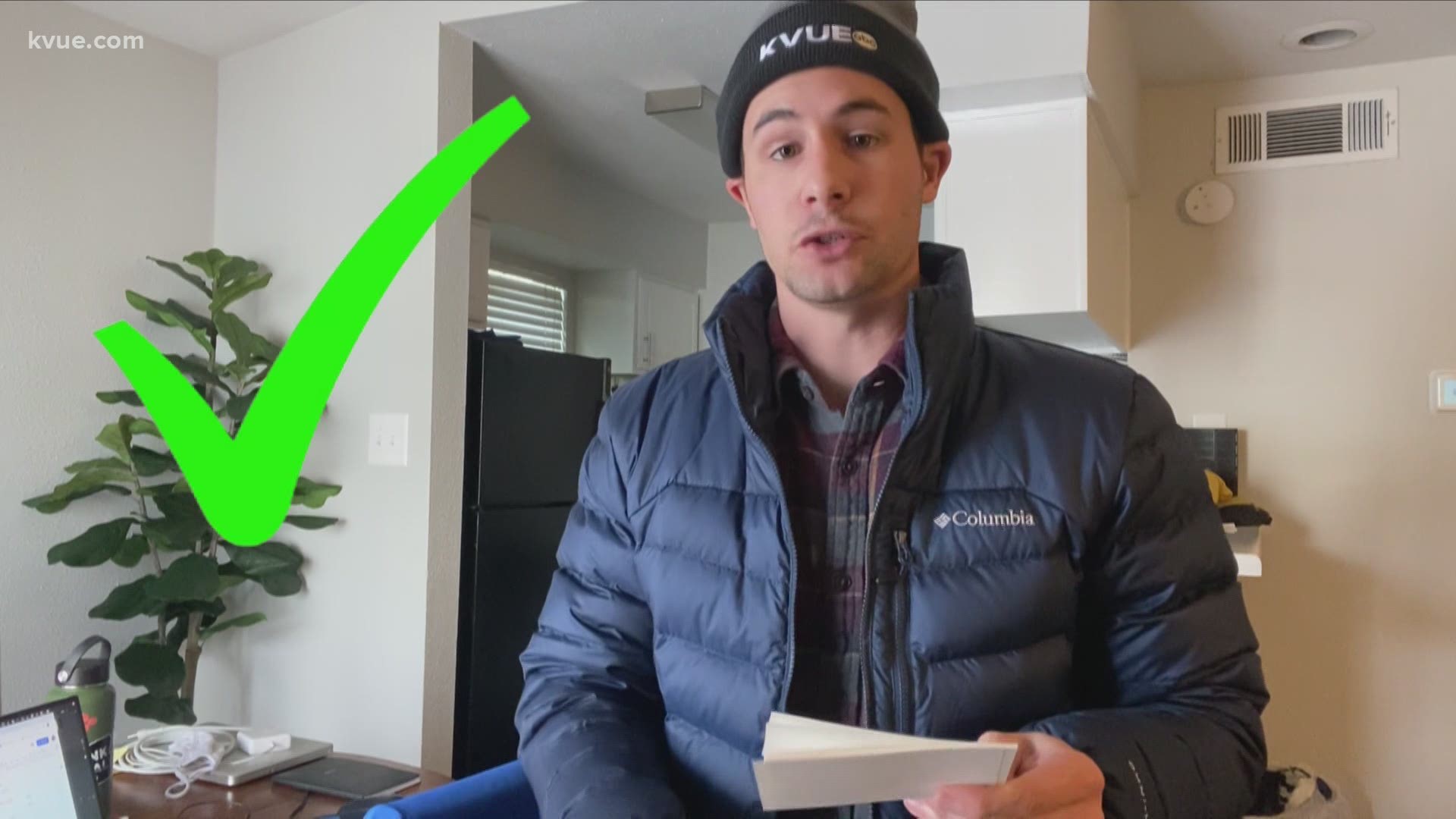AUSTIN, Texas — The city of Austin is under a boil water notice, which means it is not safe for you to drink tap water unless you follow certain steps.
This article will take you through what those steps are, what you should and shouldn't do, and who to be most mindful of while this advisory is in effect.
The reason the boil water notice was enacted is that Austin's biggest water treatment plant lost power Wednesday and water pressure dropped below the minimum standard. That could have allowed bacteria to backwash into pipes. Although power was restored Thursday morning, the notice has not been lifted.
While the bacteria likely isn't life-threatening, it can make you really sick if you consume it – especially young kids, the elderly and those who are immunocompromised.
Bottled water or boiled water is your best bet for the next few days.
Bringing the water to a full rolling boil for two minutes will kill the disease-causing microorganisms. Make sure to let the water cool before consuming.
Use this water and only this water to drink, brush your teeth, wash your hands, cook, make ice, do dishes and give to your plants and pets.
Some of the other most popular questions are:
Q: Can you drink tap water that's been filtered but not boiled?
A: No. Don't drink filtered water that comes out of your fridge without boiling it first. Filtering water only removes organic compounds, not biological contaminants.
Some water filters, like LifeStraw products, however, do claim to be effective against bacteria.
Q: Is it safe to take a shower?
A: Yes. You can shower in the water that comes out of your showerhead, just make sure you don't swallow any of it. Also, be mindful of cuts and open wounds.
Q: What if you don't have power and can't boil water?
A: Household items like regular, unscented chlorine bleach that is suitable for disinfection and sanitization can disinfect water if you use it carefully. It might taste and smell funny, but it is safe to drink with the right measurements.
- For 1 quart/liter of water, add two drops of 6% bleach or two drops of 8.25% bleach.
- For 1 gallon of water, add 8 drops of 6% bleach or 6 drops of 8.25% bleach.
- For 2 gallons of water, add 1/4 teaspoon of 6% bleach or 1/8 teaspoon of 8.25% bleach.
- For 4 gallons of water, add 1/3 teaspoon of 6% bleach or 1/4 teaspoon of 8.25% bleach.
- For 8 gallons of water, add 2/3 teaspoon of 6% bleach or 1/2 teaspoon of 8.25% bleach.
Stir the water, and let it stand for 30 minutes. If the water is still cloudy, repeat the process.
Q: What should you do if you don't have any water in your home?
A: Try to find bottled water from a store, ask a neighbor or a friend, look for an open spigot, or seek shelter if you need.
In dire situations, you can also melt snow.
According to Dave Scott, a survivalist instructor in Bastrop, you should not eat snow, as snow is so fluffy it supplies minimal water and the risk of hypothermia outweighs the risk of dehydration.
Boiling the current tap water is preferable to boiling snow because it is cleaner and takes less fuel. Catching the water that drips off the roof is also preferable to boiling snow.
If you must boil snow, concentrate on the fresh snow at the top of the ground. A little dirt won't make you sick, but parasites that are transmitted through animal feces will, so be mindful of snow that isn't white. Filtering the snow through a cloth before boiling can help remove some of the dirt.
Q: What should you do with water heaters when you don't have any water?
A: Turning off water heaters while the water is off certainly won't hurt, but it isn't exactly necessary.
If the tank is empty or close to empty, turning it off becomes more important, as does when the main water supply loses pressure.

